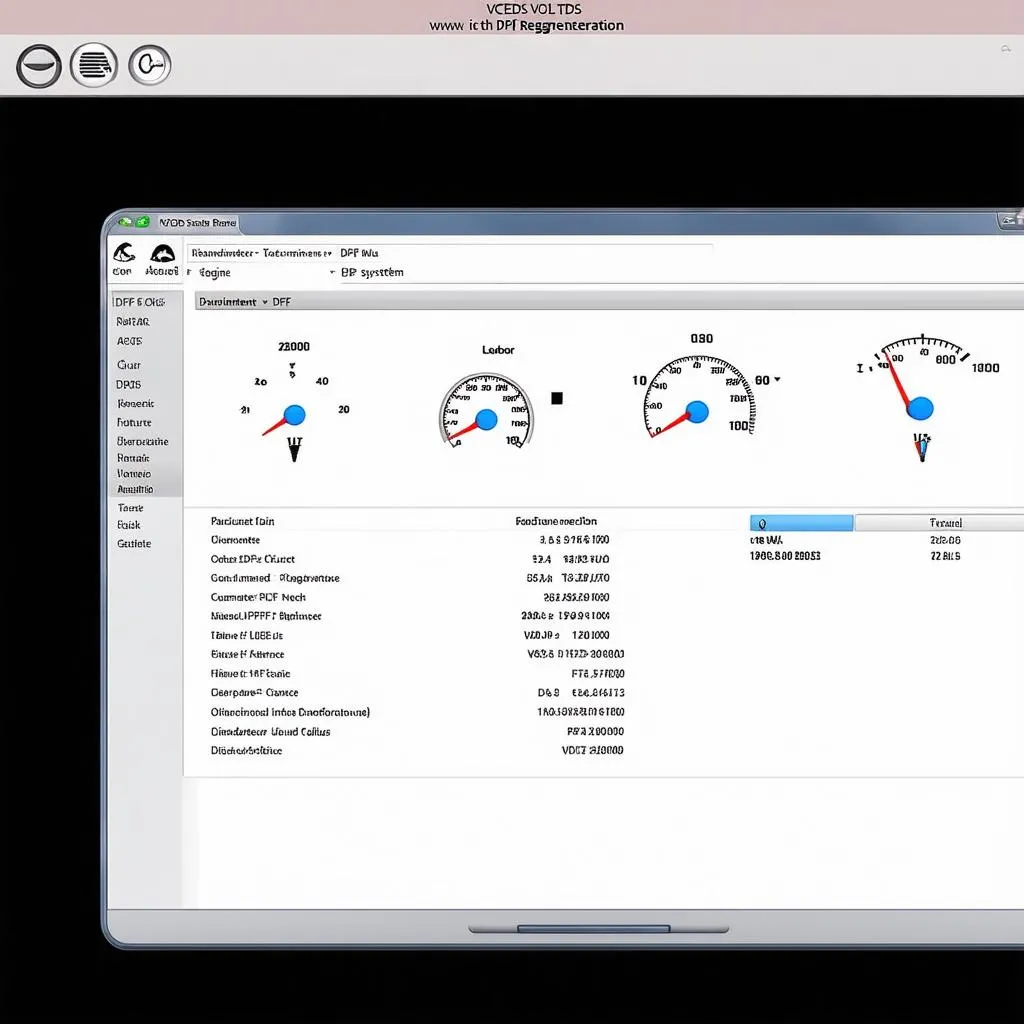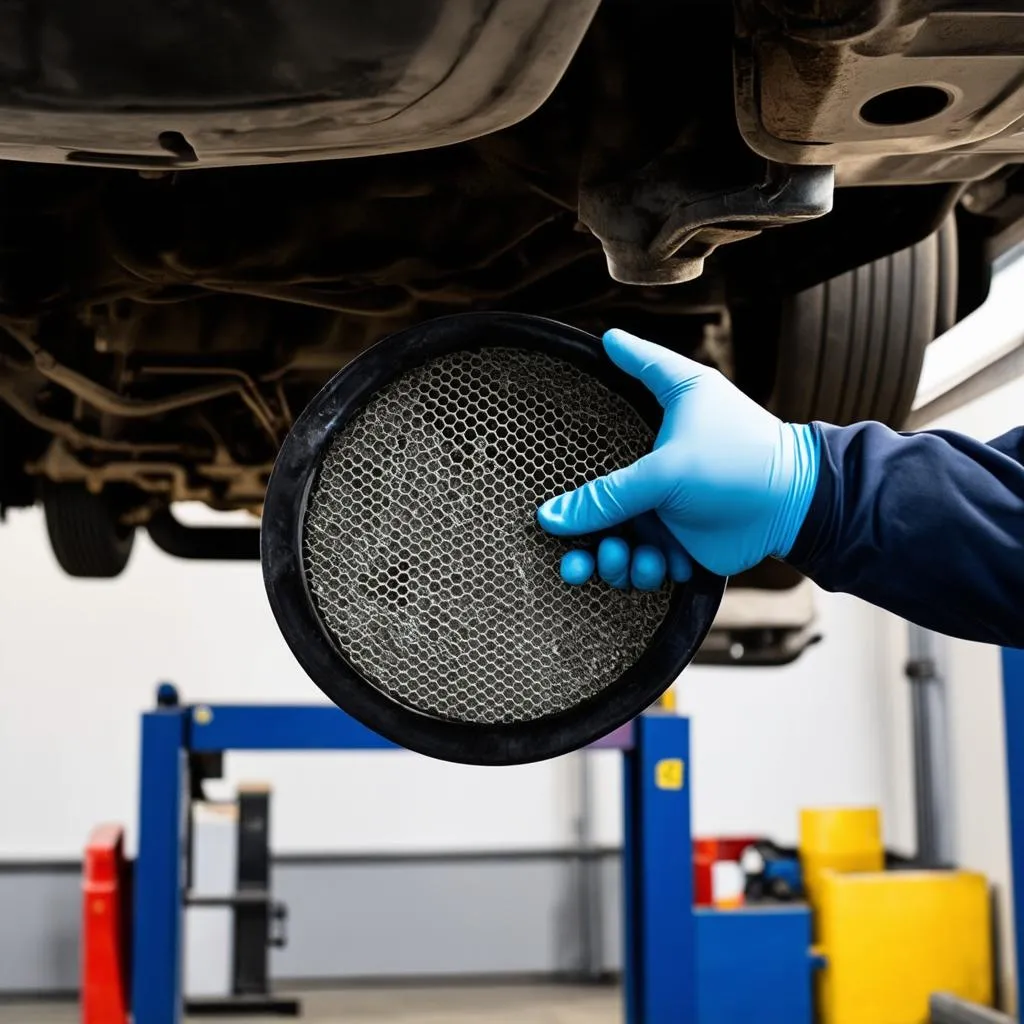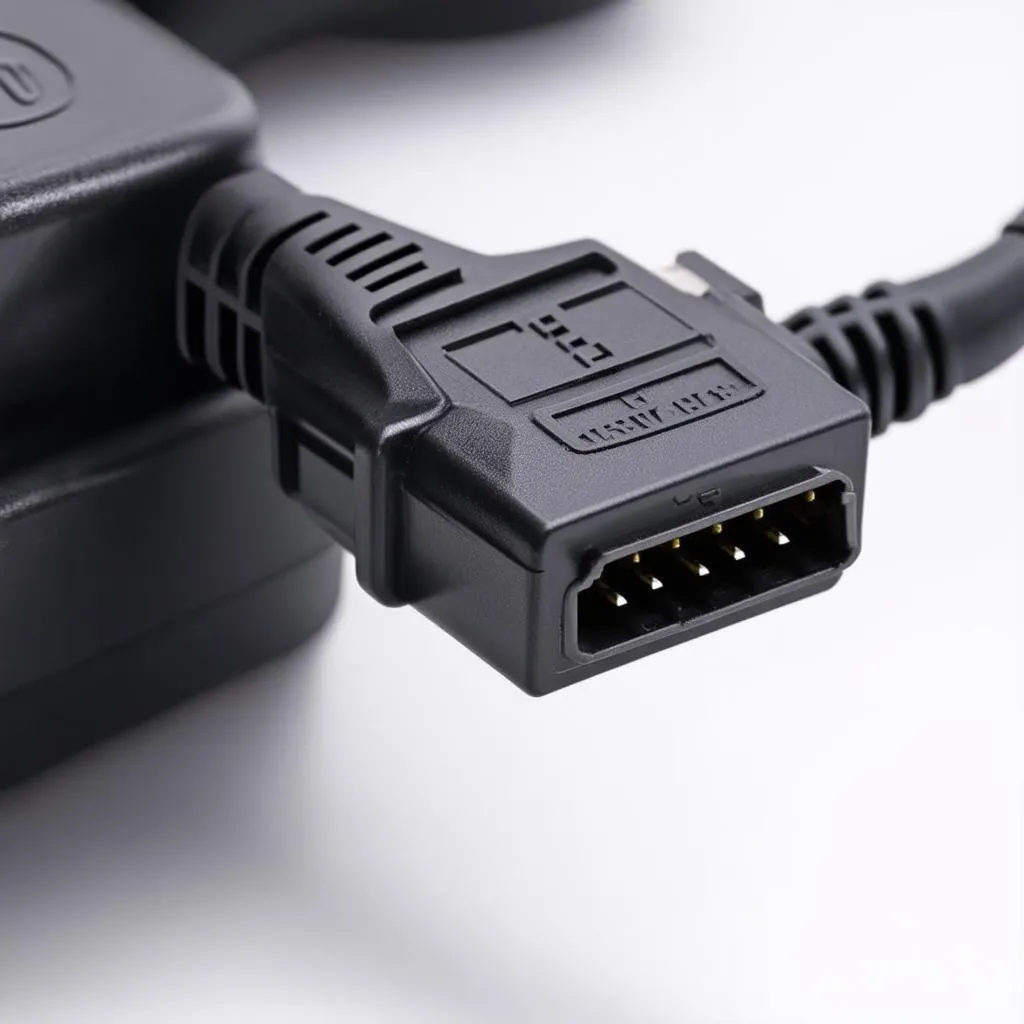The Diesel Particulate Filter (DPF) is a crucial component in modern 3.0 TDI engines, designed to trap harmful soot particles from exhaust gases. Over time, the DPF can become clogged, impacting engine performance and emissions. That’s where VCDS (Vag-Com Diagnostic System) comes in, offering a way to initiate a DPF regeneration and restore your engine to its optimal state.
Understanding DPF Regeneration and VCDS
DPF regeneration is a process where the collected soot is burned off at high temperatures, leaving behind harmless ash. While this process often occurs automatically, there are instances where a forced regeneration using a diagnostic tool like VCDS becomes necessary.
VCDS is a powerful software that interfaces with your vehicle’s Engine Control Unit (ECU). It allows you to access various system parameters, run diagnostics, and perform special functions, including initiating a DPF regeneration.
When to Consider a VCDS DPF Regeneration
Knowing when to perform a forced DPF regeneration is key. Here are some telltale signs:
- Dashboard Warning Light: A DPF warning light on your dashboard is a strong indicator.
- Reduced Engine Performance: Noticeable power loss or sluggish acceleration.
- Increased Fuel Consumption: A clogged DPF can lead to inefficient fuel use.
- Unsuccessful Automatic Regeneration: Frequent unsuccessful attempts by the car to regenerate the DPF.
Performing a VCDS DPF Regeneration on a 3.0 TDI Engine
Caution: Performing a DPF regeneration should be done with caution. It’s recommended to consult your owner’s manual or seek guidance from a qualified technician if you’re unsure.
Here’s a general overview of the steps involved:
- Connect VCDS: Connect your VCDS interface to your vehicle’s OBD-II port and launch the software.
- Establish Communication: Select the correct vehicle model and establish communication with the ECU.
- Access Engine Module: Navigate to the “Engine” module within VCDS.
- Initiate Regeneration: Locate the “DPF Regeneration” function. The exact location may vary depending on your specific vehicle model.
- Follow On-Screen Instructions: Carefully follow the on-screen prompts and instructions provided by the VCDS software.
Note: Ensure the vehicle is parked in a well-ventilated area and that the engine is at operating temperature before initiating the regeneration process.
 VCDS DPF Regeneration Interface
VCDS DPF Regeneration Interface
Advantages of Using VCDS for DPF Regeneration
- Cost-Effective: VCDS offers a more affordable alternative to frequent visits to the dealership for forced regenerations.
- Control and Monitoring: VCDS provides real-time data and allows you to monitor the regeneration process closely.
- Convenience: Perform DPF regenerations at your convenience, without the need for appointments.
Disadvantages of Using VCDS for DPF Regeneration
- Technical Knowledge: Requires some technical proficiency and understanding of vehicle systems.
- Potential Risks: Improper use of VCDS could potentially damage your vehicle’s systems.
Frequently Asked Questions (FAQs)
Q: How often should I perform a DPF regeneration using VCDS?
A: The frequency of forced regenerations depends on your driving habits and vehicle usage. If you primarily drive short distances, you might need to perform them more often.
Q: Can I interrupt a VCDS DPF regeneration process?
A: It’s generally not advisable to interrupt a DPF regeneration once it has begun. Doing so could lead to incomplete regeneration and potential issues.
Q: Is it safe to use VCDS for DPF regeneration?
A: When used correctly, VCDS is a safe and effective tool for DPF regeneration. However, improper use can lead to problems. Always consult your owner’s manual and follow instructions carefully.
Expert Insight: “While VCDS is a powerful tool, it’s important to remember that prevention is key. Regular highway driving and avoiding prolonged idling can help prevent excessive DPF clogging,” says Michael Thompson, an automotive engineer specializing in diesel engine technologies.
 Diesel Particulate Filter on Car
Diesel Particulate Filter on Car
Cardiagtech: Your Source for Diagnostic Tools
Interested in exploring VCDS and other automotive diagnostic solutions? Check out Cardiagtech, your trusted provider of high-quality diagnostic equipment and software.
Conclusion
VCDS provides a valuable solution for 3.0 TDI owners looking to take control of their DPF maintenance. By understanding when and how to perform a forced regeneration, you can ensure optimal engine performance, extend the life of your DPF, and minimize your environmental impact. However, always prioritize safety and consult your owner’s manual or a qualified professional if you’re unsure about any aspect of the process.
For personalized assistance and expert guidance, feel free to contact CARDIAGTECH – your partner in automotive diagnostics.


